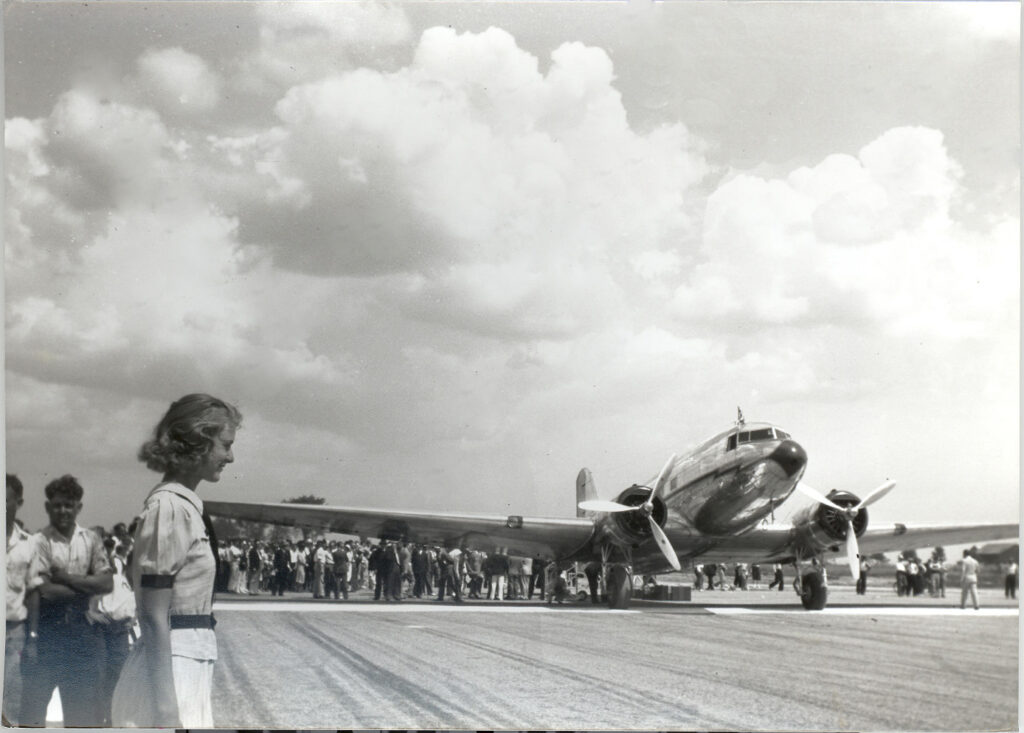YYZ.
It’s more than just an airport code; it’s part of the GTA’s identity. But while Toronto might be in its name, those three distinctive letters anchor it in Mississauga.
Back in the days of rail, morse code was the primary means of communication up and down the line for the Canadian National Railway, which used two-letter identifiers for each station.
The farming community of Malton was ‘YZ’ and years later when a group of investors bought up some nearby farms to build an airport, the code was passed on. The extra Y was added to denote that this was a Canadian destination.
It all started in 1937 when the Toronto Harbour Commission sent land agents to this small farming community on the outskirts of the city with a very important mission.
They were tasked with purchasing 13 farms so that a quote ‘million dollar, world class airport,’ can be built on 1,410.8 acres. The Chapman farmhouse served as the first airport terminal.
The Malton Airport officially opened on August 29, 1939, just days before the outbreak of World War II.

The first commercial airplane prepares for take-off at the newly opened Malton airport. (Photo courtesy of Toronto Pearson Airport)
Initially, it served as a base for the Royal Canadian Air Force, and it played a crucial role during the war, acting as a training ground for aircrews and a hub for aircraft manufacturing.
Most of the land was for the airport, but 108 acres was set aside for National Steel Car, which opened a manufacturing plant in 1938 to build bombers for the impending war.
As Canada’s aerospace industry was taking off, so too was commercial air travel.
In the post-war years, Malton Airport transitioned to a public airport, catering to the growing demand for commercial aviation. The 1950s and 1960s marked a period of significant expansion and modernization. In 1958, the airport was renamed Toronto International Airport, reflecting its increasing importance in international air travel. This era saw the construction of new terminals, runways, and facilities to accommodate larger aircraft and an increasing volume of passengers.
One of the most transformative milestones in the airport’s history occurred in 1964 with the opening of the new Terminal 1, known as the Aeroquay. This innovative circular terminal was designed to improve the efficiency of passenger processing and set new standards in airport design. However, as air travel continued to grow exponentially, it became clear that further expansion was necessary.
The 1970s and 1980s were marked by further growth and modernization efforts. In 1970, Terminal 2 opened to handle the surge in passenger traffic.
Then, in 1984, the airport underwent a significant rebranding effort and was renamed Lester B. Pearson International Airport, honoring one of Canada’s most esteemed Prime Ministers.
The most ambitious expansion project came in the late 1990s and early 2000s with the development of the new Terminal 1, which was designed to replace both the original Terminal 1 and Terminal 2.
The new Terminal 1, one of the largest in the world, officially opened in 2004 and featured state-of-the-art facilities and technologies to enhance passenger experience and operational efficiency. This project represented a major milestone in the airport’s history, setting it up to handle the demands of the 21st century.
The 10-year, $4.4 billion expansion also included extended runways and the UP Express connecting Pearson with Toronto’s Union Station in just 25 minutes.
Over the years, Pearson has continued to evolve, embracing technological advancements and expanding its capacity to meet the growing demands of global air travel. It has implemented numerous initiatives to improve passenger experience, including the introduction of automated passport control, enhanced security measures, and a wide range of dining and shopping options.

The view from the Hammerhead at the end of Pier F in Terminal 3. (Photo courtesy of Toronto Pearson Airport)
Today, Toronto Pearson International Airport is a critical hub for international and domestic air travel, serving as a gateway between Canada and the rest of the world.
It is Canada’s largest airport in terms of total passenger traffic and North America’s second largest in terms of international traffic. With daily non-stop flights to many of the world’s economies, we move people and goods across the country, the continent and around the globe.
It handles over 50 million passengers annually and offers flights to more than 180 destinations worldwide.
You can hear more stories about the people and events that helped shape Mississauga via our podcast, We Built This City: Tales of Mississauga, available on your favourite podcast platform or from our website.
